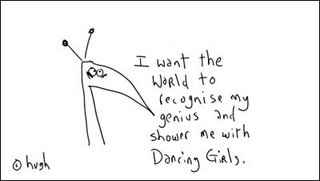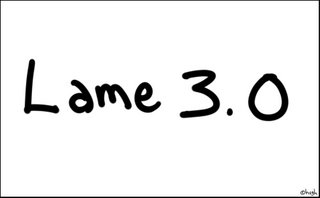Mike Gotta has jotted down a series of notes about his trend of thoughts regarding presence technologies. In my opinion, his segmenting of the subject strongly reflects the constraints of an analyst work, but he nevertheless brings up many interesting points. I like in particular the way he widens up the scope of the reflection beyond current implementations
... food for thought and for consideration as to how some of these items relate to assumptions currently made around presence systems. How many assumptions based on instant messaging, IP telephony and so on will get in the way of a more expansive view of presence?
From his points, I would like to focus on presence relations to "location", "environment", "activity" and "role", what is often refered to as parts of a context. In that respect, because of their strong relationship to the physical reality, the use of spatial metaphors and spatial organization to model context have been favored by many mediated communication and collaboration systems. I believe this approach does not properly capture the complexity of real human social interactions. In real life, we are located in "space", but we act in "places". If the structure of a world is spatial, by comparison a “place” is a space invested with social meaning, such as behavioral appropriateness or cultural expectations. Furthermore "places" are valued "spaces". The distinction is like between house and home: a house is where we shelter, but a home is where we live. In order to get contextualy closer to the complexity of social communications, integrating “place” based information would greatly improve presence technologies.
Presence technologies make applications augments physical reality rather than replaces physical reality. Current implementations fall short in adapting to the vast variety of social communications contexts any human being is experiencing in real life. For example, the nature of relations and interactions with one's friends and family differs significantly from the nature of relations and interactions in the workplace. Even these simple differences are only superficially addressed by today's presence enabled applications. As a matter of illustration, we can cite:
- The way of establishing trusted presence relations scales poorly. To establish individual full trust between 10 persons, 10×9/2=45 bilateral agreements need to be established. Trust groups would scale much better and be easier to manage.
- The availability status does not provide much added value. Many community systems provide a list of who is on to the community website, using a group-based trust model where presence information not only indicates "who is online" but also "who is here". This model may work well when using a community’s website as primary shared resource. However, many groups and communities in workplaces often use a variety of shared resources. In such cases, for example when co-workers are always online at the same time, more detailed presence information than just online/offline status is needed.
- The trust model is very crude. Either one establishes a trust relation and can always observe other's presence information, or one does not establish a trust relation, in which case one can never other's presence information and cannot engage in conversations. This might not be problematic when dealing with friends and family, with whom you expect to resolve unwanted interruptions easily. It becomes a problem when dealing with a larger set of co-workers in a multi-project environment.
Presence technologies need to be augmented to provide information not only about people but also about “places”. Unlike what is currently offered in IM and VoIP applications, more advanced presence mechanisms must allow exchange of information only with a certain subset of people, not always but sometimes only, depending on real-time context information that can be derived from the virtual or real “places” people visit. Today, ordinary presence systems only give answers about person oriented questions:
- Who is online, or is this person online?
- What is this person doing?
Advanced presence systems will have to provide answers and notifications about “place” oriented questions, such as:
- Who is here?
- Who is near?
- Where is that person?
- What is that person doing there?
It happens these questions can be answered by combining different scoped attributes of presence infomation, including the trust relation between parties, their real or virtual locations, activities at these locations and presence and awareness scopes.
Trust scope. Some presence systems allow anyone who has access to a presence server to see presence information of others, other systems are more restrictive. The establishment of trust is distinguished by four model aspects:
- Opt-in / opt-out / managed: In an opt-in trust model, others can only see presence information if you explicitly give them permission. In an opt-out model, others can see presence information, unless you explicitly denied them permission. In a managed model, a third party instead of the users determines who can see presence information.
- Individual / group: In a individual trust model, each person rights to presence information are managed separately. In a group trust model, rights to see presence information are managed for an entire group.
- Reciprocal / non-reciprocal: In a reciprocal trust model, if A has the rights to presence information of B, then B also have the rights to the presence information of A. In a non-reciprocal trust model, this may not be the case.
- Permanent / blockable / contextual: In a permanent trust model, presence information is available as long as the rights to do so exist. In a blockable trust model, presence information can temporarily be denied. If the rights to presence information are based on location or place the trust model is contextual.
Location scope and virtual distance. When users browse the web, edit files from a shared storage, or read or post in blogs, they are present at a "location" in cyberspace. That said, many characteristics of physical space, such as being aware of someone's presence, and being able to initiate contact and communicate with that person, do not necessarily exists in the cyberspace.
Location information is expressed by coordinates, but in cyberspace unlike in the real world, users can be at multiple coordinates simultaneously. Place-based presence systems need to answer the question "Who is near?", have to calculate virtual distance between these coordinates. Virtual distance is then used to determine who can and who cannot be seen. To calculate virtual distance, presence location coordinates need to be laid out in a space, such as topology, virtual world or any directed graph. In place-based presence systems, location information constitutes a primary form of presence information. Not only the fact that someone is online somewhere in cyberspace, but also which resource that person is accessing provides presence information that can be made available to trusted parties.
Presence scope. A presence scope specifies the maximum virtual distance at which a trusted party can watch presence information. One may use multiple presence scopes, e.g., "people on the same website can see me, but cannot see the page I am on" and "people on the same web page can see if I am focusing on that page".
Awareness Scope. An awareness scope specifies the maximum virtual distance at which a user wants to get notified of presence information of trusting parties. One may use multiple awareness scopes, e.g., "are there people with me on the same web page?" and "are people with me on the same web page focusing on the page?".
Activity scope. What a user is doing at a location is also presence information. For example, in addition to browsing a web page, this may involve whether the user is actually focusing on this page or not , whether the user is editing this page or not.
Ultimately, by relaying “place” based information, presence technologies will enable three important building blocks of social interaction-- visibility, awareness, and accountability-and thus become "socially translucent" systems. We can illustrate a "socially translucent" system by the following example. Consider a door with a design problem, which is likely to slam into anyone about to enter from the other direction when opened quickly. An attempt to fix this problem would be to place a "Please open slowly" sign on the door. As one might guess, the sign is not a particularly effective solution. But we could also put a glass window in the door. As people approach the door they see whether anyone is on the other side and, if so, they modulate their actions appropriately. The sign is no longer required. While this solution works, it is useful to examine the reasons for the effectiveness of the glass window:
- Firstly, the glass window makes visible socially significant information. As humans, we notice and react to movement and human faces and figures more quickly than we notice and interpret a printed sign.
- Secondly, the glass window supports awareness. One does not open the door quickly because one knows that someone is on the other side. Our social rules come into play to govern our actions, as we have been raised not to slam doors into other people.
- Lastly, there is another subtler reason. Even if one does not care about hurting others, one will nevertheless open the door slowly because one knows that the other knows that one knows it is there, and therefore one will be held accountable for its actions. While awareness and accountability usually occur together in the physical world, they do not necessarily in a virtual context. It is through such individual feelings of accountability that norms, rules, and customs become effective social control mechanisms.
Note that "social translucence" is not only about acting according to social rules, but more about facilitating different types of communication and collaboration. Using presence information it is today possible to observe that another party is likely to be available for communication. In return for giving up some privacy, the other party expects to be contacted at suitable moments, can screen incoming messages, can plausibly deny being present by not responding or responding later, or simply by initiating the conversation at a time of its choosing. With "socially translucent" presence technologies it becomes easier for users to have coherent discussions, to observe and imitate others' actions, to engage in peer pressure, to create, notice, and conform to social conventions.
Technorati Tags: Conversation space, Presence, Instant messaging, Social network, AntecipateLabels: Conversation space, Instant messaging, Presence, Social network










